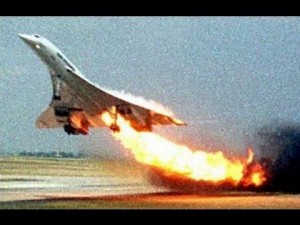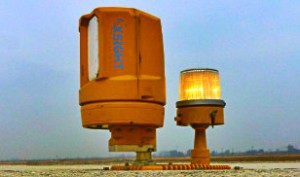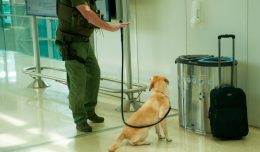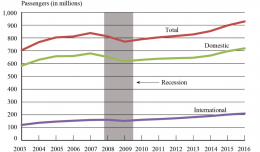One of the challenges airports face in maintaining a safe operating environment is eliminating foreign object debris (also known somewhat less redundantly as foreign object damage), or FOD. As the term implies, FOD is any object that doesn’t belong on an airport paved surface, be it the runway, taxiway or ramp area. This debris can cause serious damage if ingested into engines or struck by tires at high speed. Even small, seemingly harmless items can lead to problems if left in the wrong place.
Typical FOD ranges from small items such as tools, pieces of luggage, bolts, screws and gravel; to larger items such as aircraft parts, tire fragments and broken pavement. Sometimes it can be a very unusual item such as an iPad left on a wing by a pilot during his preflight inspection that ends up flying off onto the runway during the plane’s takeoff roll. Boeing estimates that FOD causes an average of $4 billion worth of damage to aircraft and engines. In the worst case scenario, FOD can lead to an aircraft accident, such as Air France Flight 4590 in 2000. Flight 4590, a Concorde departing Paris Charles de Gaulle for New York, ran over a 17 in. long titanium alloy strip dropped by a Continental Airlines DC-10 that had taken off five minutes earlier. The strip punctured a main gear tire causing rubber fragments to slam into the wing rupturing a fuel tank. The ensuing leak and fire caused the plane to crash killing all 109 on board plus 4 on the ground.
A variety of methods are used at airports to detect and remove FOD on paved areas. Airports with commercial air service or a Part 139 certification are required to conduct daily self-inspections of runways, taxiways and ramp areas. Oversight of construction areas is also done to ensure that debris doesn’t get blown or carried onto aircraft operating areas by ground vehicles. Surface inspections are also conducted as needed after an aircraft incident. To keep pavement clear, airports also use sweepers (similar to those used to clean streets), vacuums, and vehicle mounted magnet bars to collect debris. In addition to these efforts, airlines train their ground staff and mechanics to “clean as they go”, spotting and removing potential FOD while they perform their regular duties.
Although the manual practices have proven effective, they are not perfect. For instance, many airports may conduct their daily self inspection just once a day, and may respond to remove FOD if it is reported by a pilot or Air Traffic Control, which leaves the potential for undetected FOD. Going back to the Air France crash, airports that received Concorde operations regularly conducted a runway sweep prior to every Concorde departure. However this inspection wasn’t conducted prior to Air France 4590’s ill fated takeoff run. To bridge the gap, technology is now being implemented to assist in the detection of FOD on airport runways. Boston Logan International recently installed a system called FODetect on Runway 9/27. The system uses small detection units located next to the runway edge lights that contain both radar and cameras to spot foreign objects on the pavement. Using an integrated optic sensor with NIR illumination and millimeter wave radar sensing, FODetect can spot items as small as a rivet. Once something has been detected, an alarm message and video images are sent to airport operations to identify the object and retrieve it. There are a few other similar systems, some vehicle mounted and others mounted on towers, that utilize radar and cameras to scan the airfield for potential problems.
Given that it’s usually not readily apparent, FOD is not likely to be something passengers think about when it comes to air safety. However airports make sure to leave no stone -or metal rod or misplaced electronic device- anywhere it can wreak havoc on aircraft.
Gabe Andino is an Associate Editor for NYCAviation.com, aviation enthusiast and airport management professional residing in New Jersey. Follow him on Twitter @OGAndino.









